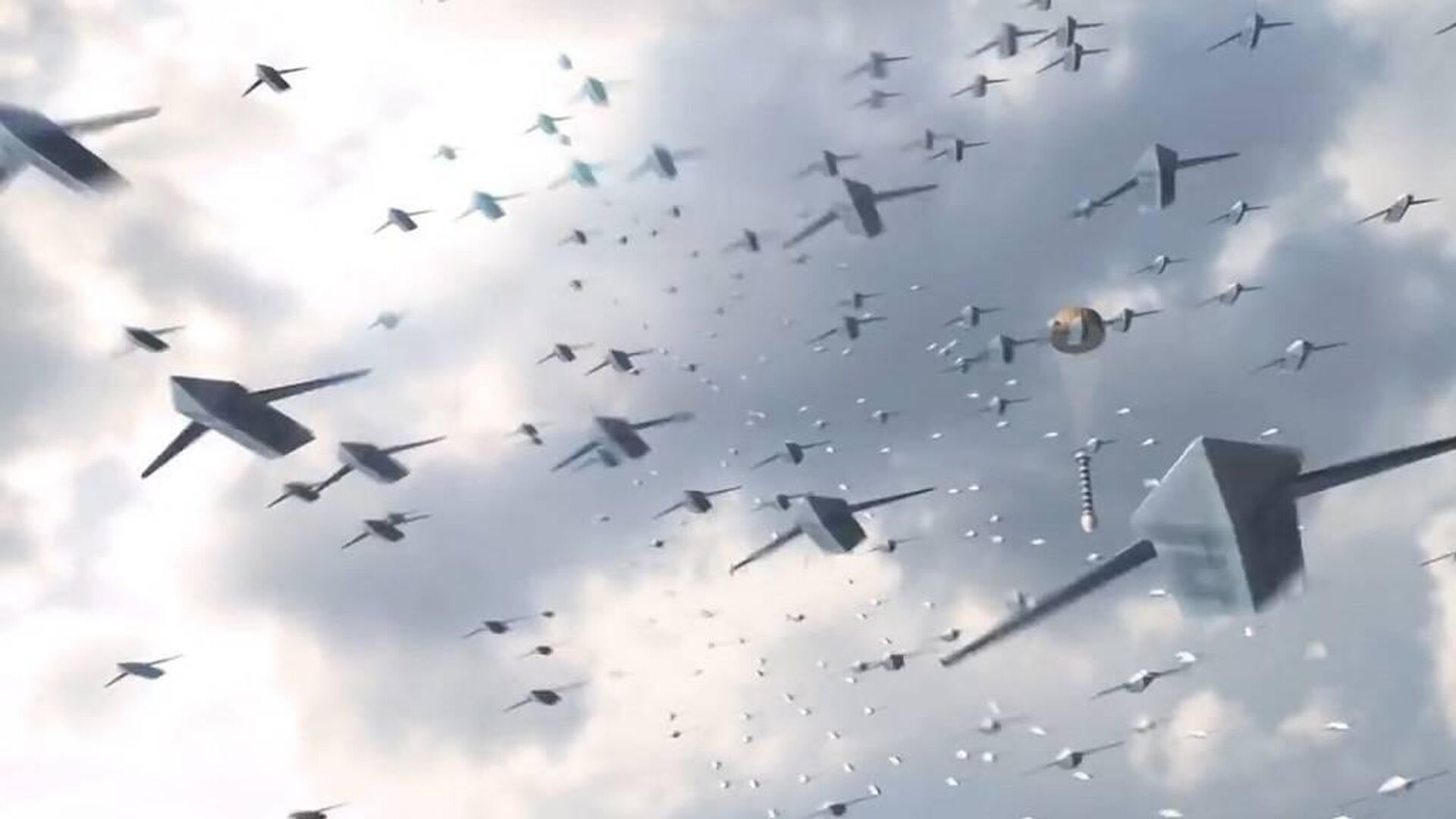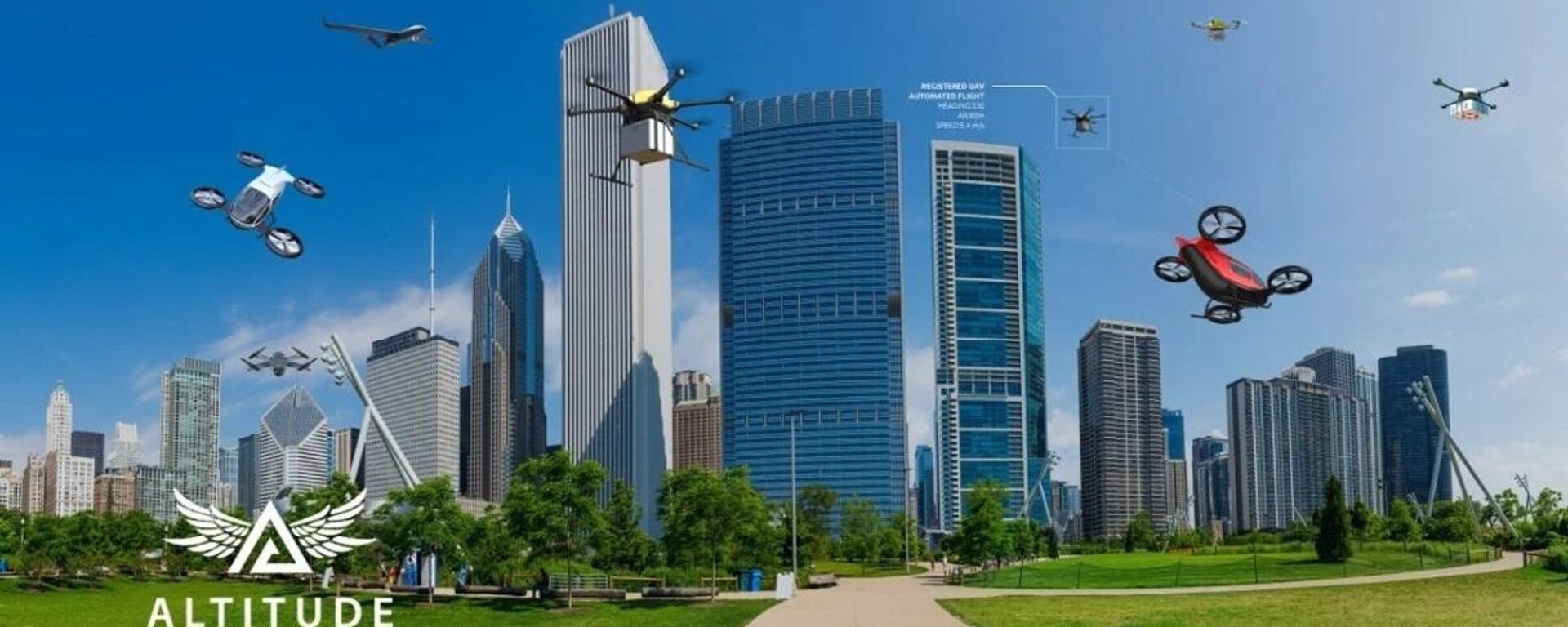‘No UAVs & Just 4 Staff’: RAF’s Drone Swarm Squadron at ‘Ambitious’ Plans Stage 2 Years After Launch
09:46 GMT 04.07.2022 (Updated: 15:20 GMT 28.05.2023)

© Photo : Air Force Research Laboratory
Subscribe
As part of his ‘Defence in Global Britain’ speech in early 2019, then-Defence Secretary Gavin Williamson touted plans to develop “swarm squadrons of network enabled drones capable of confusing and overwhelming enemy air defences,” promising they would be “ready to be deployed by the end of the year.”
The UK Ministry of Defence (MoD) statements that it is close to achieving operational use of swarming drones may be no more than a ‘smoke and mirrors’ campaign, as the Royal Air Force (RAF) drone trials 216 Squadron in effect owns no unmanned aerial vehicles (UAV), revealed a Freedom of Information (FoI) request made by Drone Wars UK.
Furthermore, there has been no in-house testing or trialing carried out since the RAF Squadron was established over two years ago to become a trailblazer in developing the UK’s swarming drones capability. The squadron currently has just four personnel assigned to it, stated the British campaign group.
Now that the MoD has admitted that “216 Squadron has not conducted any UAV tests since it was reactivated on 1 April 2020,” Drone Wars has urged greater ‘transparency and accountability’ around the funding and development of drones by the UK.
Drone swarms are large groups of UAVs – twenty or more - operating in conjunction with the goal of overwhelming the enemy air defence systems by giving them too many targets to shoot down.
Early in 2019, then-Defence Secretary Gavin Williamson had expounded on the ambitious plans during his ‘Defence in Global Britain’ speech, saying:
“I have decided to use the Transformation Fund [ring-fenced funds to develop new military technology] to develop swarm squadrons of network enabled drones capable of confusing and overwhelming enemy air defences.”
He also promised, at the time, “we expect to see these ready to be deployed by the end of the year.”
Several months later, the Chief of the Air Staff announced that RAF 216 Squadron was being reformed “as an experimental unit dedicated to developing ‘swarming’ technology for unmanned aerial vehicles.”
Since its formation in 2020, 216 Squadron has observed 13 trials carried out by drone manufacturers as it viewed five types of UAVs being demonstrated during the past year, according to the publication.
Calls For ‘Proper Transparency’
In the UK, swarming drones capability has been linked to the development of the country’s sixth-generation jet fighter aircraft, the BAE Systems Tempest.
Tempest is described as a projected ‘system of systems’, incorporating a large fighter aircraft, large ‘loyal wingman’ drones as well as swarms of drones, to be launched from an aircraft nearer the projected target, according to Drone Wars. The group added that some aspects of testing of this concept were carried out in 2016 by the US using Perdix drones.
Under the programme name of ‘Alvina,’ the UK MoD is believed to be testing this concept through its Rapid Capability Office. The campaign group referenced a press release dating to 2020 made by Italian company Leonardo, which was soon deleted from their website. It purportedly stated that it was “working in partnership with the Royal Air Force’s Rapid Capabilities Office” and had “successfully conducted a live trial of a ‘swarming drones’ capability.”
RAF sources are cited as saying that a successful trial in January 2021 saw 20 drones flying in a swarm at RAF Spadeadam, the Cumbrian air weapons training range.
The trial in question was reportedly the culmination of an effort funded by the MoD’s Defence Science and Technology Laboratory (DSTL). It is described as having invested in a UK company, Blue Bear Research, under a ‘Many Drones Make Light Work competition to “demonstrate the networked operation of a swarm of 20 ‘drones’ for applications that include situational awareness, medical assistance, logistics resupply, explosive ordinance detection and disposal, as well as confusion and deception.”
A swarm of 20 #drones has completed the largest military exercise of its kind in the UK.
— Dstl (@dstlmod) January 28, 2021
Hundreds of scenarios were played out in our Many Drones Make Light Work project.
It involved @wearebluebear @durham_uni @AirbusDefence @DASAccelerator and others https://t.co/YgRC5c6QVM pic.twitter.com/MVM77SiLMb
However, no such in-house trials have ever been conducted by 216 Squadron, underscored Drone Wars UK.
Nevertheless, in his speech to the Global Air Chiefs’ conference last July, Sir Mike Wigston, head of the RAF, hailed 216 Squadron as having “proved beyond doubt the disruptive and innovative utility of swarming drones”.
“We have been focused on confusing and overwhelming adversary air defences but we are already contemplating new disruptive missions that I will leave to your imagination,” the air marshal stated.
According to Drone Wars, defence companies and politicians tend to ‘overpromise results and underestimate costs’ while offering precious little clarity regarding the funding of weapons development programmes.
“Defence companies often over-promise and politicians can be dazzled by new military technologies so it’s crucial that there is proper transparency around these programmes,” Director Chris Cole said.

